I am still thinking about Camille A. Brown’s Mr. TOL E. RAncE, performed in Portland earlier this month. My essay below, written in 2005, addresses the American performance tradition which Brown examines, critiques, celebrates, discards and transcends.
Thirteen Ways Of Looking At Blackface
Acting on the principle that if you can’t say anything nice, don’t say anything at all, many books of American theater history either make no mention of blackface minstrelsy, or include a brief discussion focusing mostly on how deeply horrified the author is by the information he/she is about to convey.
If this policy was intended to help blackface go away, it didn’t work. It never would work. Blackface, and the influence of blackface, is everywhere. With a tip of the hat to Wallace Stevens, here are thirteen ways to view the long, vexing, love affair our country has with cross racial impersonation.
1. Blackface is Evil
Bill Robinson compares notes with Shirley Temple in THE LITTLEST REBEL (1935).
“What does that mean – “free the slaves”?“ Shirley Temple asks Bill Robinson, a wise old man in formal dress who happens to be her own personal property. “I don’t know what it means myself.” he replies thoughtfully.
The clues that the South these two inhabit exists solely in the minds of white Northern show business professionals are all over THE LITTLEST REBEL: from the blackface Shirley later puts on, to the banjo Robinson plays while Shirley sings Polly Wolly Doodle, to Zip Coon, the tune with which Robinson entertains Shirley’s birthday party guests.
Zip Coon was introduced by pioneering solo blackface entertainer George Washington Dixon in 1829. A tsunami sized hit whose popularity presaged the minstrel craze yet to come, today we know it as Turkey In The Straw.
2. Blackface is Essential
Judy Garland sings Under The Bamboo Tree with Margaret O’Brien in MEET ME IN ST. LOUIS (1944)
Hollywood didn’t make a musical which included an actual turn-of-the-century coon song. However, in MEET ME IN ST. LOUIS, Judy Garland sings the best selling song three African American geniuses created in deliberate response to that craze.
Written by three of the most talented, disciplined, and ambitious artists ever to turn their attention to the creation of pop, Under The Bamboo Tree was the product of Robert Cole, the writer-director-producer-star of the first all black musical, A Trip To Coontown; J. Rosamond Johnson, the composer of Lift Every Voice & Sing, the black national anthem; and James Weldon Johnson, the author of The Autobiography of an Ex-Colored Man.
They constructed Under The Bamboo Tree to cater to the nationwide fad for dialect songs, while steering clear of negative racial cliches. The commercial and artistic successes they enjoyed as a team helped pave the way for both Tin Pan Alley and the Harlem Renaissance.
3. Blackface is Benign
Jimmy Stewart and Donna Reed sing Buffalo Gals in IT’S A WONDERFUL LIFE (1946)
The song Jimmy Stewart sings with Donna Reed on the way home from a high school dance, just before she accidentally loses her robe and jumps into a Bedford Falls rosebush, was originally intended to both express and lampoon the powerful allure of Buffalo, New York prostitutes to the men who worked the Erie Canal.
Buffalo Gals was copyrighted to Cool White, one the first minstrel superstars. Some of its many variants (Bowery Gals, Alabama Gals, Darktown Gals, etc.) testify to an alternate reading of “buffalo” as a coded reference to “African American”, as seen in the term “buffalo soldiers”. Whether the song was inspired by prostitutes from Buffalo, or by prostitutes who were coded as “buffalo”, nothing is left of its minstrel past in the sanitized lyrics we now know.
4. Blackface is Pathetic

Fred Astaire brings Dixie to Paris with Kay Thompson in FUNNY FACE (1957)
Fred Astaire and Kay Thompson are spiritually, if not actually, blacked up when they sing Clap Yo Hands in a Parisian salon filled with bored intellectuals. Minstrelsy is the flag they wave to set themselves apart from the Old World ennui which envelopes everyone else in the room.
In their hands “Why does a chicken cross the road?”, the oldest of minstrel show jokes, is an act of patriotism. But the Parisians were right to yawn. Even two show business pros can’t revive this corpse. What you learn from FUNNY FACE is that beatniks had their own link to minstrelsy – the tambourine. And that Michael Jackson definitely stole his look, especially his socks, from Astaire’s wardrobe.
5. Blackface is Angry

Ossie Davis directs Mabel Thompson as the militant, strip teasing Topsy in COTTON COMES TO HARLEM (1970)
She comes onto the stage, doubled over, wearing rags, with a bandanna on her head. By the end of the song she is triumphantly naked, except for a few strategically placed balls of cotton. The mood of Mabel Thompson’s dance is defiant. She is defeating slavery, defeating cotton, defeating history.
The crowd roars in delight when she takes off her bandanna to reveal a multi-braided Topsy hairdo, and roars again in approval when she lifts off the Topsy wig to reveal her own natural hair.
Uncle Tom’s Cabin, the most popular stage play of the nineteenth century, provided multiple opportunities for blackface. Uncle Tom was played in blackface. So was Topsy. Ossie Davis uses this history in Cotton Comes To Harlem - in several ways.
6. Blackface is Haunted
Gary Cooper sings Sweet Genevieve with his six bachelor housemates in BALL OF FIRE (1941)
Not all minstrelsy was clowning. You went to cry as much as to laugh. Woodman, Spare That Tree kept minstrel show audiences weeping for decades, as did Silver Threads Among The Gold. Victorian Americans may have kept their emotions under control elsewhere, but once they were inside the minstrel hall, they cried their eyes out. They cried for Old Black Joe when he was in slavery, they cried for him during the war, and they cried for him after the war. When they got tired of crying over Joe, they pined for long ago girlfriends (Sweet Genevieve) or dead ones (Jeannie With The Light Brown Hair).
In this scene, Cooper’s posse of aging bookworms toasts love with a wine addled sing along. Minstrelsy was born amidst beer, so it is appropriate that these nutty professors would be boozing it while they close harmonize a wistful old minstrel tune.
7. Blackface is Political

Brian De Palma turns the tables in the Be Black, Baby sequence in HI MOM (1970).
In HI MOM, Robert De Niro brilliantly interrogates a mop. “What’s that? Make love, not war? I make love very well, thank you very much!” he screams. He is auditioning for an acting job, and he gets it. He plays a white cop in Be Black, Baby, an Off Off Broadway play in which black actors in whiteface invite white playgoers to share the black experience by having their wallets taken and their women sexually violated, followed by wrongful arrest. They also get blacked up.
If you think you fully understand the power politics behind cross racial impersonation, and do not think you could possibly be shocked by anything De Palma has to say, see HI MOM.
8. Blackface is Over
Duke Ellington passes Freeman Gosden and Charles Correll by in CHECK & DOUBLE CHECK (1930)
The dapper Duke gives a quizzical look to two shabbily dressed white men wearing blackface as he heads past them into a brightly lit mansion where he and his band have been hired to play a sumptuous party. This moment marks an historic changing of the guard, when African American entertainers sans blackface left white blackface entertainers in the dust.
CHECK & DOUBLE CHECK is the first and last film in which you can see Freeman Gosden and Charles Correll, the white actors who created AMOS ‘N’ ANDY. Duke Ellington would go on to appear in eight Hollywood films, never in blackface, always as himself.
9. Blackface is Current
Andy Samberg and Chris Parnell cruise for cupcakes in LAZY SUNDAY (2005)
The best possible proof that cross racial impersonation is still with us as a national obsession is the instant success of Andy Samberg and Chris Parnell’s rap parody, LAZY SUNDAY. Downloaded by millions and sent around the world minutes after airing on Saturday Night Live, LAZY SUNDAY inspired a string of online homage parodies, the best of which ends with two nice Jewish boys bringing home a menorah.
(I wrote this list in 2005. Andy Samberg didn’t rest on his laurels. His Iran So Far is a comprehensive lexicon of minstrel tropes. See it to believe it!)
10. Blackface is Sublime
Tim Moore in a tutu smoking a cigar in BOY WHAT A GIRL (1947).
There is no blackface in BOY WHAT A GIRL.
However there is cross dressing, and cross gender impersonation was second only to cross racial impersonation on the list of transgressive thrills offered the Victorian audiences of the minstrel show. The incomparable Tim Moore carries on this performance tradition in BOY WHAT A GIRL, as have, more recently, both Martin Lawrence and Tyler Perry.
11. Blackface is Tasteless
Ben Stiller blacks up in ZOOLANDER (2001)
With an Irish mom in show business and a Jewish dad in show business, Ben Stiller’s credentials are impeccable for blacking up. Irish performers dominated the minstrel industry for most of the nineteenth century, Jewish ones brought it into the the twentieth. George M. Cohan, Eddie Cantor and Al Jolsen all practiced “white out of black”, as does Ben Stiller in ZOOLANDER.
12. Blackface is Enigmatic

Cliff Edwards sings When You Wish Upon A Star in PINOCCHIO (1940)
Minstrel shows no longer drew crowds when Cliff Edwards began his career in the 1920’s, but blackface still secured individual performers license to be more emotional, more theatrical, more unpredictable than they could be without it. Edwards made his name playing the ukelele and singing in blackface. By the time he supplied the voice for Walt Disney’s Jiminy Cricket, blackface was no longer part of his public persona. It is, however, where he began.
13. Blackface is Our Inheritance
Bert Williams plays cards in NATURAL BORN GAMBLER (1916); Eddie Cantor runs away from Ethel Shutta in WHOOPEE (1930); Mae West checks George Raft’s hat in NIGHT AFTER NIGHT (1932)
NATURAL BORN GAMBLER provides film record of Bert Williams’ blackface. WHOOPEE does the same for his Ziegfield Follies protégée, Eddie Cantor. But Mae West left no film record of the blackface she wore while doing Bert Williams imitations at the beginning of her career in New York. It was gone by the time she went Hollywood.
Should we try to erase blackface? If you did a thorough job, all of these performers would have to go. You would have to go without both Spike Lee, who made a movie about blackface, and D. W. Griffith, who made a movie with blackface. You end up without Jimmy Rogers, Bob Wills and Hank Williams, all of whom began their careers by blacking up. No George C. Wolfe. No Irving Berlin. And that would be just the start. After you finished your purge of history, and gotten rid of your thousands, you would turn around and see all around you, still growing, a popular culture which was formed by cross racial impersonation, and is still being so formed.

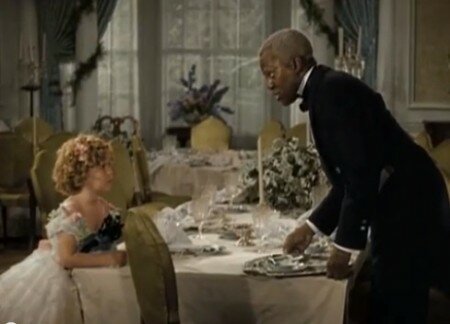
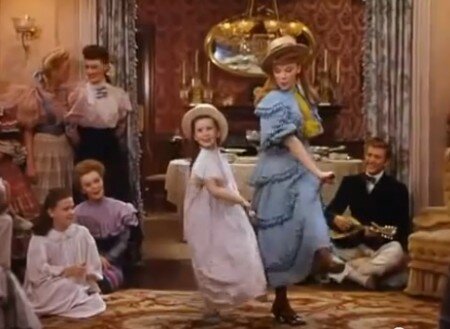
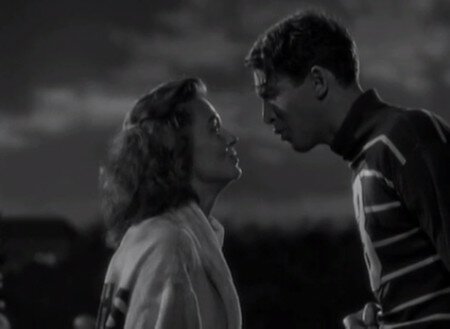
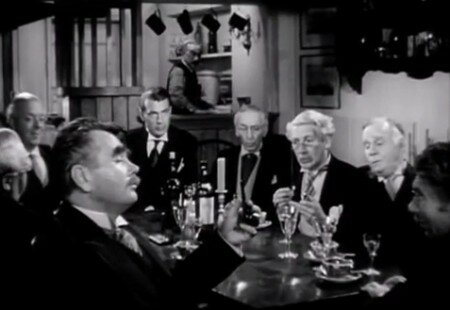

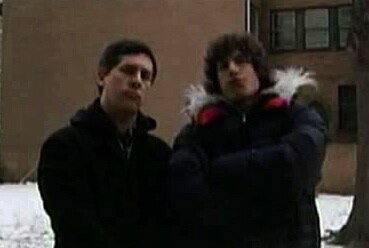
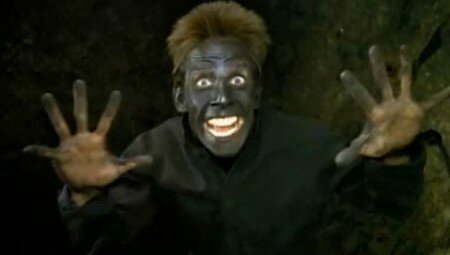

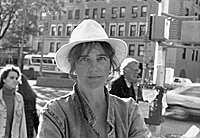
0 responses so far ↓
There are no comments yet...Kick things off by filling out the form below.
Leave a Comment